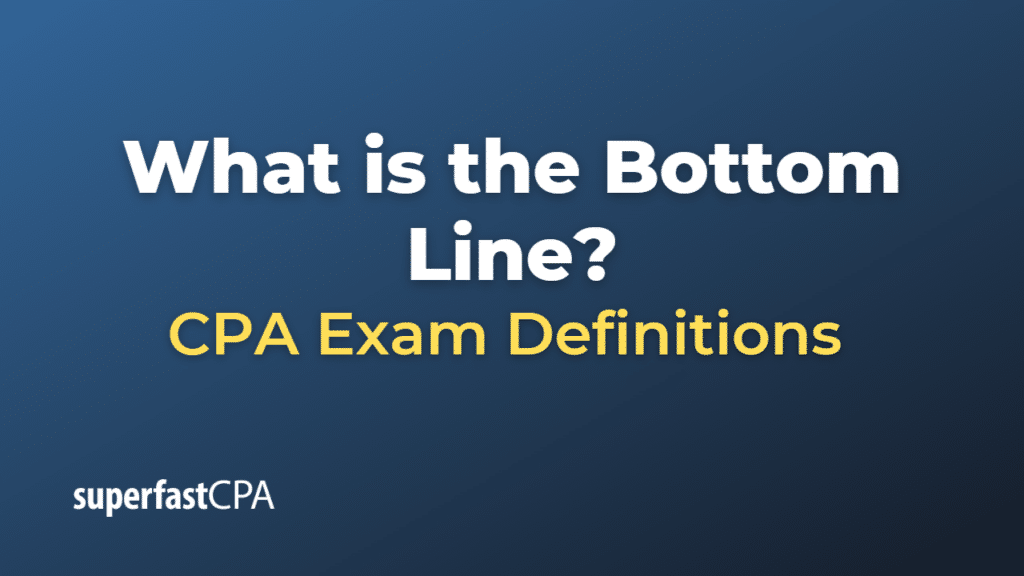Bottom Line
The bottom line refers to the final figure that represents a company’s net income or profit after all expenses, taxes, and costs have been deducted from its revenue. The term is often used in the context of financial statements, specifically the income statement, where the bottom line is the last line, showcasing the net profit or loss a company has generated during a specific period.
In a broader sense, the bottom line is used to describe the ultimate outcome, result, or conclusion of a situation or process. In business, it is a key indicator of a company’s financial performance and overall health. A positive bottom line indicates that the company has made a profit, while a negative bottom line indicates a loss.
The bottom line is a crucial metric for stakeholders, such as investors, creditors, and management, to evaluate a company’s performance, make investment decisions, and assess its creditworthiness. Improving the bottom line can be achieved through various strategies, including increasing revenue, reducing costs, improving operational efficiency, or a combination of these approaches.
Example of the Bottom Line
Let’s consider an example of a fictional company, TechGadget Inc., to illustrate the concept of the bottom line.
TechGadget Inc. is an electronics company that manufactures and sells smartphones, tablets, and accessories. At the end of the financial year, the company’s income statement looks like this:
- Revenue: $1,500,000
- Cost of Goods Sold (COGS): $800,000
- Gross Profit (Revenue – COGS): $700,000
- Operating Expenses: $400,000
- Operating Income (Gross Profit – Operating Expenses): $300,000
- Interest Expense: $25,000
- Income Tax Expense: $75,000
- Net Income (Operating Income – Interest Expense – Income Tax Expense): $200,000
In this example, TechGadget Inc.’s bottom line is its net income, which is $200,000. This figure represents the company’s profit after accounting for all expenses, taxes, and costs. A positive bottom line indicates that TechGadget Inc. has made a profit during the financial year, signaling a favorable financial performance.
Investors, creditors, and management can use this bottom line figure to evaluate the company’s performance, make investment decisions, and assess its creditworthiness. TechGadget Inc. can also use this information to develop strategies to improve its bottom line, such as increasing revenue, reducing costs, or enhancing operational efficiency.













